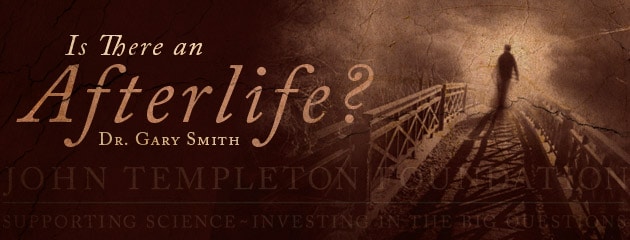
Throughout human history people have pondered whether death ends their existence or is the gateway to an afterlife. In recent decades millions around the world have reported near-death or out-of-body experiences. The world’s major religions teach various conceptions of an afterlife that include reincarnation, bodily resurrection and the immortality of the soul.
The John Templeton Foundation recently awarded a three-year, $5 million grant to John Martin Fischer, a professor of philosophy at the University of California, Riverside, to study a wide range of issues related to the afterlife and immortality. The grant will enable Fischer and a team of eminent scientists, philosophers, and theologians to rigorously examine global reports about near-death experiences and how belief in an afterlife influences human behavior. The Immortality Project promises to be the most comprehensive study of the afterlife ever conducted. Its findings will be reviewed by respected leaders in their fields and published in academic and popular journals. When the project is finished, Fischer plans to publish a book tentatively titled, “Immortality and the Meaning of Death.”
“We have a deep human need to figure out what happens to us after death,” Fischer asserts. Literature, especially fantasy and science fiction, and theology have discussed the afterlife, heaven, hell, purgatory, and karma, he argues, but no one has comprehensively combined the resources of science, theology, and philosophy to study immortality. Fischer and his co-investigators will try to “sift fact from fiction” and “provide guidance for discussion of immortality and the human experience for generations to come.”
“We will be very careful in documenting near-death experiences and other phenomena, trying to figure out if these offer plausible glimpses of an afterlife or are biologically induced illusions,” Fischer says. “Our approach will be uncompromisingly scientifically rigorous. We will look at near-death experiences and try to find out … what is promising, what is nonsense, and what is scientifically debunked. We may find something important about our lives and our values.”
Fischer hopes that researchers will analyze cultural variations in reports of near-death experiences. For example, while Americans consistently report seeing a tunnel with a bright light at the end, Japanese accounts often include tending a garden. “Is there something in our culture that leads people to see tunnels while the Japanese see gardens?” he asks. “What can we learn about our own values and the meanings of our finite lives by studying near-death experiences cross-culturally (as well as within our own culture)?”
Researchers may also explore such questions as: Is immortality worthwhile? Would an afterlife be interesting or boring? Does belief in life after death give meaning to life? What can an analysis of immortality teach us about the meaning of human life? Investigators may also examine how belief in life after death affects individuals’ earthly behavior and the continuity of personal identity in the afterlife. Belief in heaven or reincarnation provides many people with comfort and consolation as they confront death.
Fischer explains: “We hope to bring to the general public a greater awareness of some of the complexities involved in simple beliefs about heaven, hell and reincarnation, and encourage people to better understand and evaluate their own beliefs about an afterlife and the role of those beliefs in their lives.” For example, many consider free will to be very important. According to the Judeo-Christian tradition, heaven is the best possible place. But how can people have free will in heaven? “How do you fit these ideas together?” Fischer asks.
I have examined many of these fascinating questions in my book “Heaven in the American Imagination” (Oxford University Press, 2011), which received a 2012 Award of Merit from “Christianity Today” in the History category. Drawing on a wide array of sources, including works of art, music, sociology, psychology, folklore, liturgy, sermons, poetry, fiction, and devotional books, I paint a sweeping, provocative portrait of what Americans—from Jonathan Edwards to Mitch Albom—have thought about heaven.
Concepts of heaven, I argue, are ever-changing, constantly adapting to the spirit of the age. In the colonial era, heaven focused primarily on the glory of God. For the Victorians, heaven was a warm comfortable home where people would live forever with their family and friends. Today, heaven has less Christian identity; many see it as a celestial entertainment center or a paradise where everyone can reach their full potential.
The global, multi-disciplinary focus of the Immortality Project will provide new information and insights, but I suspect that its findings will confirm what I discovered: Views of the afterlife are powerfully affected by the cultural and social conditions of various eras and locales. This study promises to shed more light on a subject that painters, poets, philosophers, pastors, and millions of others have pondered through the ages: Is there life after death and, if so, what will it be like?

